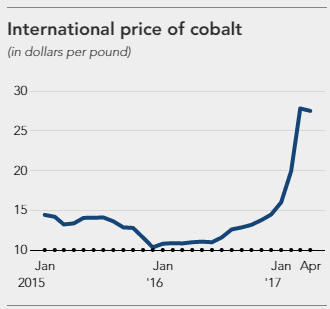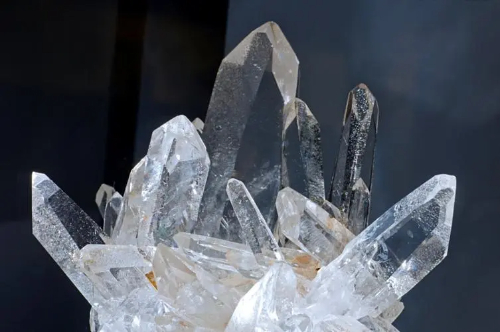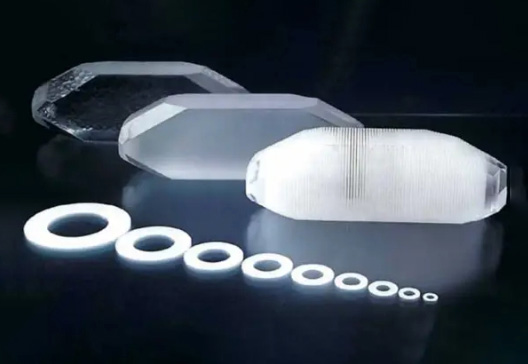How Electric Cars and Smartphones Started a New Gold Rush
Many people don’t realize how much modern life depends on various materials. Technology products like smartphones, electric cars, large-screen TVs, and green energy systems all rely on a wide range of chemicals and elements. A single mobile phone, for example, contains over a third of the elements found in the periodic table.
As demand for high-tech products grows, so does the need for the materials that make them. However, the supply of these materials depends on many factors like politics, economics, and geography. This causes prices to rise and fall, making mining these metals a risky business. Here are some examples of materials whose prices have soared in recent years.
Cobalt: Essential for Batteries
Cobalt is a key ingredient in the superalloys used for modern jet engines and in the batteries that power our phones and electric cars. In recent years, the demand for electric cars has increased rapidly. Global registrations of electric cars jumped from 200,000 in 2013 to 750,000 in 2016. This surge, along with growth in other industries, pushed cobalt prices up from £15 per kilogram to nearly £70 per kilogram over three years.
Cobalt is essential in rechargeable lithium-ion batteries, which are found in most electronic devices today. Electric vehicles (EVs) need even more cobalt than smaller devices. A single electric car battery can contain up to 15 kilograms of cobalt. As the push for cleaner energy and transportation grows, cobalt will likely remain in high demand. However, most cobalt comes from the Democratic Republic of Congo (DRC), a country with political instability and challenging mining conditions. This adds to the uncertainty of its supply and price.

Rare Earth Elements: The Backbone of Modern Tech
Rare earth elements are a group of 17 metallic elements. They are often by-products of mining operations for iron, titanium, or uranium. These elements are critical for many modern technologies, including electric cars, wind turbines, and smartphones. Each rare earth element has unique properties that make it valuable in different applications.

For instance, neodymium is crucial in making strong magnets for electric motors and wind turbines. Demand for electric cars and wind power has driven neodymium oxide prices up. It reached a peak of £93 per kilogram at the end of 2017, more than double its mid-2016 price. Even after a drop, its price remains about 40% higher than in 2016. Other rare earth elements, like dysprosium and terbium, are also in demand for their use in high-performance magnets and other technologies.
China is the largest producer of rare earth elements, supplying about 80% of the global market. However, geopolitical tensions and trade restrictions can affect the availability and price of these elements. As a result, other countries are looking to develop their own sources of rare earths to reduce reliance on China.
Indium: The Invisible Metal in Every Screen
Indium is one of the rarest metals on Earth, yet it is used in devices we see every day. All tablets and touch screens use a very thin layer of indium tin oxide, a transparent conductor. This element is mainly produced as a by-product of zinc mining, and extracting just 1 gram of indium may require mining 1,000 tons of ore.

Indium is crucial for electronics because it is the best material currently available for making touchscreens. Scientists are exploring alternatives, like graphene, a form of carbon that might replace indium in the future. Indium prices dropped sharply in 2015, but rose by 50% between 2016 and 2017, reaching around £350 per kilogram. This increase was largely driven by its use in tablet screens and other electronics.
Tungsten: A Heavy Metal with Many Uses
Tungsten is one of the heaviest elements, twice as dense as steel. It was once a common material in the filaments of incandescent light bulbs. Even though LED lights have largely replaced tungsten bulbs, tungsten remains important in many everyday products. It plays a key role in our phones, helping create vibrations. Tungsten, along with cobalt and neodymium, helps rotate the tiny motors that generate these vibrations.
Tungsten is also widely used in industry. When combined with carbon, it forms tungsten carbide, a very hard material used for cutting tools. These tools are essential in aerospace, defense, and automotive manufacturing. Tungsten is also used to make wear-resistant parts for drilling machines in oil and gas extraction, mining, and tunnel construction.
Why the New Gold Rush Matters
The "new gold rush" for these materials is not just about rising prices; it's about ensuring a steady supply of the elements needed for the future. As the world shifts towards electric vehicles, renewable energy, and advanced electronics, the demand for cobalt, rare earth elements, indium, tungsten, and others will continue to grow. At the same time, finding and mining these materials becomes more challenging and expensive.
Governments and companies are looking for ways to secure their supply chains. This includes developing new mining projects, recycling materials from old products, and investing in research to find alternatives. For example, researchers are trying to reduce the amount of cobalt needed in batteries or find substitutes for indium in touchscreens. Innovations like these could help balance supply and demand in the future.
Conclusion
The growing demand for electric cars, smartphones, and other high-tech products has sparked a new "gold rush" for critical materials like cobalt, rare earth elements, indium, and tungsten. These materials are essential for the technologies that power our modern lives. However, their supply is influenced by various factors, making their availability uncertain and their prices unpredictable. This presents both challenges and opportunities in securing these resources for the future.
Stanford Advanced Materials (SAM) specializes in providing high-quality materials, including many of the elements driving this new gold rush. With a commitment to supporting innovation and sustainability, SAM offers reliable supply solutions to meet the needs of today's rapidly evolving industries. Visit our website to learn more about our products and services.



